Alternative names സദ്യ Place of origin India | Region or state Kerala | |
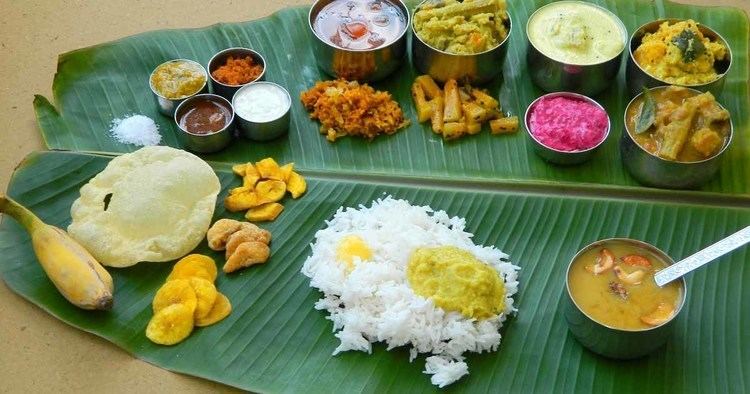 | ||
Similar Avial, Thoran, Kheer, Chakka prathaman, Olan | ||
Amarakka thoran amarapayar thoran broad beans stir fry
Sadhya (Malayalam: സദ്യ) is a variety of dishes traditionally served on a banana leaf in Kerala, India. Sadhya means banquet in Malayalam. It is a vegetarian feast prepared by both, men and women, especially when needed in large quantities, for weddings and other special events.
Contents
- Amarakka thoran amarapayar thoran broad beans stir fry
- Delicious aviyal kerala style kerala sadhya dish
- Preparations
- The usual items in a Sadya
- Prathaman
- References
During a traditional Sadhya celebration people are seated cross-legged on mats. Food is eaten with the right hand, without cutlery. The fingers are cupped to form a ladle. A normal Sadhya can have about 24-28 dishes served as a single course. In cases where it is a much larger one it can have over 64 items in a Sadya like the Sadya for Aranmula Boatrace (Valla Sadhya).suhaim
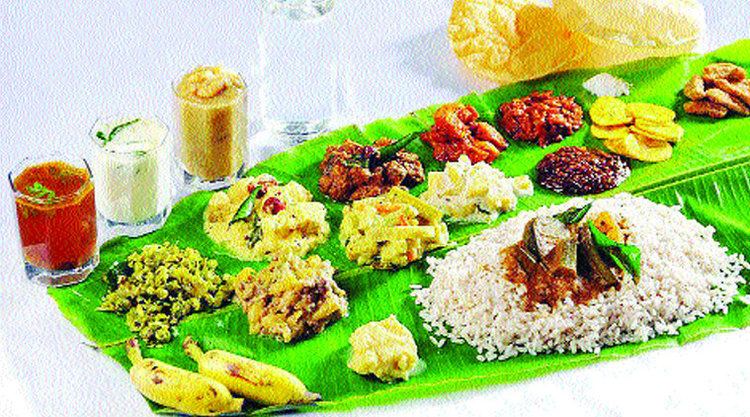
The main dish is plain boiled rice, served along with other dishes collectively called Kootan (കൂട്ടാന്) which include curries like Parippu, Sambar, Rasam, Pulisseri and others like Kaalan, Avial, Thoran, Olan, Pachadi, Kichadi, Koottukari, Elissery, Mango pickle, Pulinji, Naranga achaar (Lime Pickle), as well as Papadam, plantain chips, Sharkara Upperi, Banana, plain curd and Buttermilk. The traditional dessert called Payasam served at the end of the meal is of many kinds and usually three or more are served. The 'Kootan' are made with different vegetables and have different flavours; some say the reason for including so many dishes in the Sadhya is to ensure that the diners will like at least a few dishes.
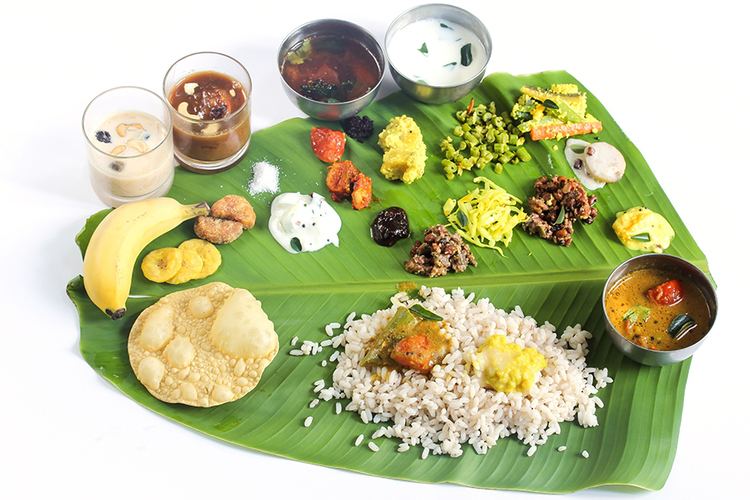
The dishes are served on specific places on the banana leaf in specific order. For example, the pickles are served on the top left corner and the banana on the bottom left corner, which helps the waiters to easily identify and decide on offering additional servings. The most common ingredients in all the dishes are rice, vegetables, coconut and coconut oil as they are abundant in Kerala. Coconut milk is used in some dishes and coconut oil is used for frying and also as an ingredient in others.

There are variations in the menu depending on the place and religion. Some communities, especially those in the northern part of Kerala, include non-vegetarian dishes in the sadhya. Although custom was to use traditional and seasonal vegetables, it has become common practice to include vegetables such as carrots, pineapples, beans in the dishes. Tradition has it that Onion and garlic are not typically used in the sadhya. Conventionally, the meal may be followed by vettila murukkan, chewing of betel leaf with lime and arecanut. This helps digestion of the meal and also cleanses the palate.
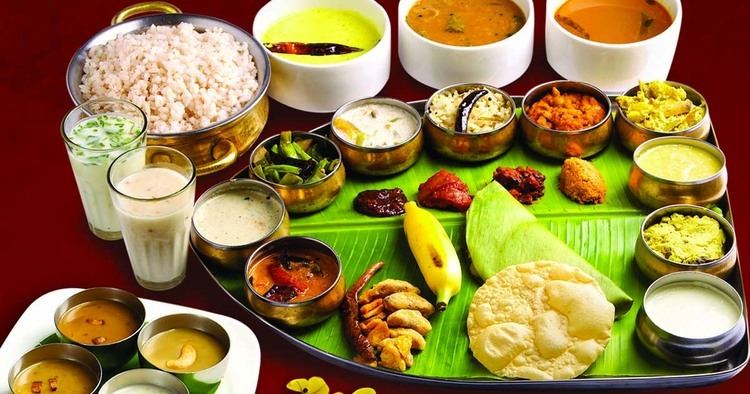
Delicious aviyal kerala style kerala sadhya dish
Preparations

The sadhya is usually served for lunch. Preparations begin the night before, and the dishes are prepared before ten o' clock in the morning on the day of the celebration. On many occasions, sadhya is served on tables, as people no longer find it convenient to sit on the floor.
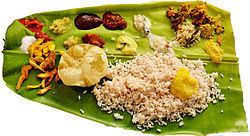
Traditionally, the people of the neighborhood spent the night helping the cooks in cooking. They also volunteer to serve the food for the hosts to the guests. This involves a fair amount of social interaction which help build rapport with the neighbors.
Sadhya is served in Pankthi (Sanskrit) - panti in Malayalam - meaning in lines or rounds where sets of people are served in sitting lines, on the floor earlier, now on benches and desks. There can be many Pankti's depending upon total size of the crowd and the capacity of the place. The hosts normally sits only during the last pankti.
In a Sadhya, the meals are served on a Banana leaf. The leaf is folded and closed once the meal is finished. Closing the leaf away from you signifies complete satisfaction with the food and closing it towards you would mean a signal to the cooks that it needs improvement.
The Travancore-style sadhya is renowned to be the most disciplined and tradition-bound. There is usually an order followed in serving the dishes, starting from the chips and pickles first. However, different styles and approaches to making and serving the dishes are adopted in various parts of Kerala depending on local preferences.
The usual items in a Sadya
The items include:
These side dishes are followed by desserts like Prathaman and Payasams.
Prathaman
Prathaman is a sweet dish in the form of a thick liquid; similar to payasam, but with more variety in terms of ingredients and more elaborately made. It is made with white sugar or jaggery to which coconut milk is added. The main difference between a prathaman and a payasam is that the former uses coconut milk, while the liquid versions of the latter use cow's milk.
